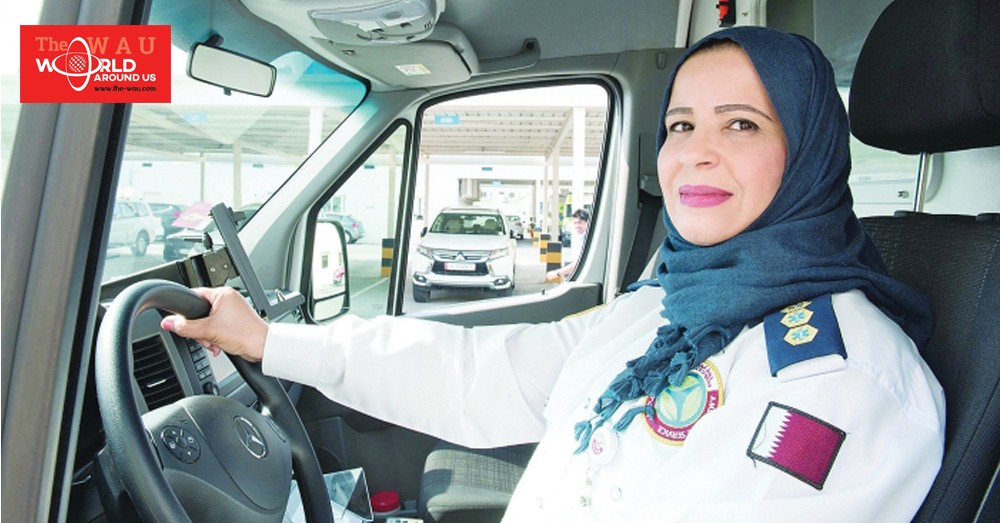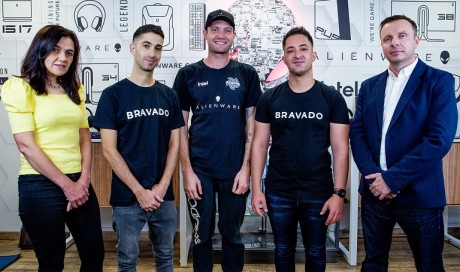Fathia Zaalani, a paramedic with Hamad Medical Corporation’s (HMC) Ambulance Service, says rushing to the scene of a traffic accident, fire, or call from the home of someone who has had a heart attack comes naturally to her.
She says being one of the first people on the scene, helping those in need of medical assistance, isn’t just what she does. It’s who she is.
The 19-year veteran paramedic is a fixture at the headquarters of HMC’s Ambulance Service. She is proud to hold the titles of Qatar’s first female paramedic and ambulance drive, she says.
“Almost 20 years ago, in 2000, I came to Doha after completing my studies in Tunisia. I joined HMC’s Ambulance Service, becoming the first female paramedic. I later became an assistant critical care paramedic and then my manager suggested I drive the ambulance, so I underwent the intensive training necessary to acquire the licence. Today, I’m not only Qatar’s first female paramedic but I’m also the first female ambulance driver in the country,” said Zaalani.
Brendon Morris, Executive Director for the HMC Ambulance Service, said Zaalani is a wonderful example of diversity in the Ambulance Service.
“Worldwide, the paramedic field remains a male-dominated profession. Yet, it is clear from the example of Zaalani that regardless of gender, paramedics make an enormous contribution to the communities they serve. We are always working to encourage more women to join our service and to help deliver the life-saving care that we provide,” said Morris.
Zaalani says driving an ambulance is normally a profession reserved for men and she initially found it challenging to be a woman in the profession. She said racing to the scene to help those most in need is her calling.
“I remember the first time I drove the ambulance. People on the streets were surprised to see me. I could see it in their eyes. There were a lot of surprised looks and I could see the amazement on the faces of the motorists I shared the roads with. But then I noticed people began saluting me. They were waving and cheering me on,” said Zaalani.
Driving an ambulance is a constant race against time. In addition to excellent driving skills, it requires patience, time management, and problem-solving skills. Zaalani says the experience has made her a better driver and a more capable paramedic.
“I think women are natural problem solvers. We are multi-taskers and can make critical decisions under pressure. I think being a paramedic is a career that many women would excel in. I’m proud of my profession and I encourage any woman or any young girl who is thinking about this career to pursue it,” added Zaalani.
Zaalani says as a paramedic she is required to assess the condition of her patients and to make potentially life-saving decisions. She uses hi-tech equipment and makes complex, split-second assessments.
As an ambulance driver, she is trained to navigate what is essentially a mobile clinic and she says ongoing education is essential for first responders like her. She attends every workshop and training event she can.
In addition to her responsibilities with the Ambulance Service, Zaalani also works with the National Command Center (NCC), the organization responsible for managing a coordinated response to both local and national emergencies.
She is the first woman to join the NCC as a senior supervisor in the Ambulance Service Medical Communication Center, training new supervisors and representing her organization locally and internationally.
Zaalani says one of the best aspects of her job is being part of a team. She says her colleagues are always there for each other, noting that their shared experiences have created a unique bond and a degree of mutual respect that cannot be duplicated.
Share This Post















